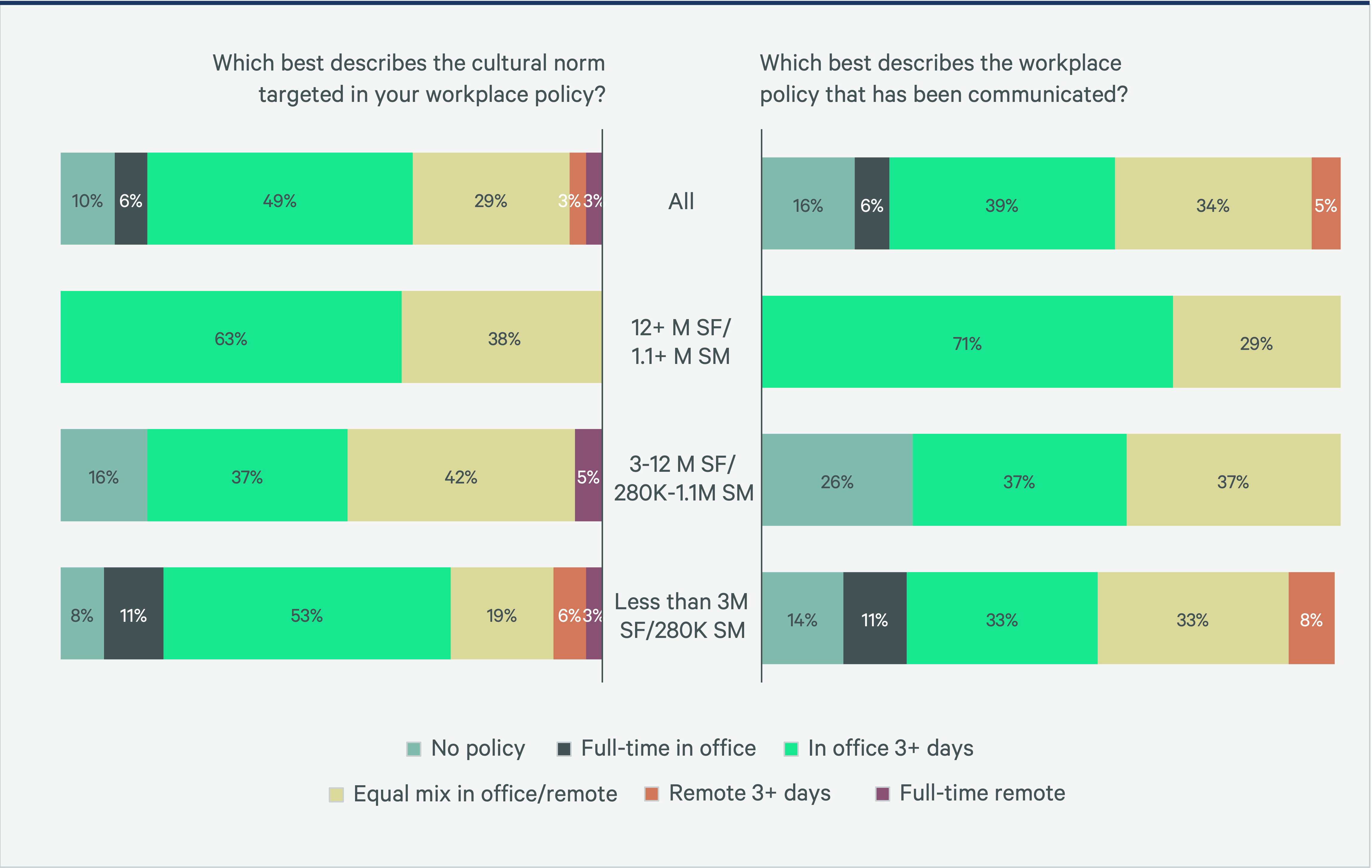Chapter 2
Hybrid Programs That Work
2023–2024 CBRE Global Workplace & Occupancy Insights
5 Minute Read
Hybrid Work is Standard, But Approaches Vary
Organizations’ primary motivation for supporting hybrid work is to optimize their real estate portfolio. Most organizations ask employees to spend half their time or more in the office, with less than 10% requiring in-office work full time.
Despite having similar motivations and policies, organizations’ approaches to hybrid work vary, particularly by portfolio size. For example, participants with medium-sized portfolios are not investing in training workers on effective hybrid work practices and are offering training for managers at significantly lower rates than their peers. While most participants are investing in technology tools to support hybrid work and collaboration, companies with larger portfolios are more likely to implement the training, change management, and communication programs needed to drive transformation.
Figure 1: What are the goals for supporting hybrid work?
Figure 2: Which of the following is included in your hybrid work program?
There Are Gaps Between What Organizations Want and What Policies Say
Organizations create workplace policies to establish cultural norms and guide employees’ behavior. These policies are especially important for setting clear expectations during times of change but must be communicated clearly and consistently to drive the desired behaviors. When we compare the behaviors that policies target to the behaviors that policies communicate, we see a disconnect between what leaders expect and the direction they give employees. No wonder 81% of participants say leadership expectations and employee behavior are not in sync.
Figure 3 & 4: The difference between targeted behavior and policy requirements

Common Characteristics of Successful Hybrid Work Programs
Only 19% of participants claim to have successful hybrid programs where employee behaviors and leadership expectations align. These organizations have common characteristics—most notably, all of them have documented workplace policies and guidelines. Those organizations that have clearly communicated leadership expectations are most likely to see the desired behaviors from employees.
Figure 5: Are the hybrid work expectations of leaders and employee behaviors in sync?
In Addition to Clear Guidelines, Successful Hybrid Programs Also Include:
Related Services
Leverage occupancy data to empower, anticipate and unlock opportunities within your portfolio.
- Plan, Lease & Occupy
Workplace Consulting
Build resilience, attract and retain talent, and foster connection and collaboration in your workplace.
- Transform Business Outcomes
Consulting
Gain comprehensive guidance on insightful, executable real estate strategies for both investors and occupiers.
- Plan, Lease & Occupy
Organizational Change & Transformation
Enabling organizations to achieve outcomes, improve performance and create change-ready cultures.
Related Insights
-
Brief | Creating Resilience
Three Office Occupancy Trends That Are Impacting Portfolio Strategy
September 1, 2023

CBRE’s 2023 Workplace & Occupancy Benchmarking Program has identified three trends across Occupancy Management clients.
-
Podcast | Adaptive Spaces
Where It’s At: Expert takes on creating the ideal office experience
June 27, 2023

Want a more engaged, productive workforce in the age of hybrid work? The key is rethinking the office with new design approaches, flexible space and an abundance of practical amenities. So say three workplace strategy experts—Industrious CEO Jamie Hodari and CBRE’s Lenny Beaudoin and John Stephens—in a discussion about the future of cities.
Authors
Susan Wasmund
Executive Managing Director, Americas Consulting | Global Occupancy Management







